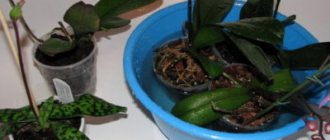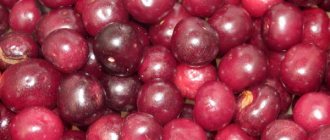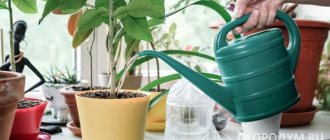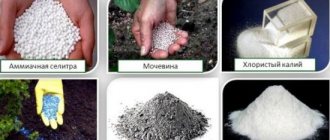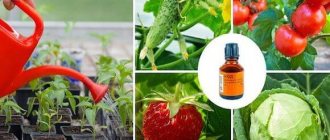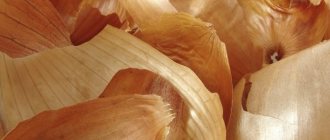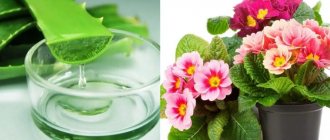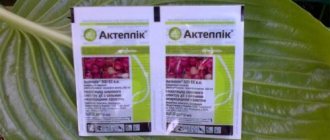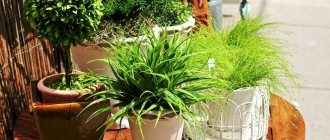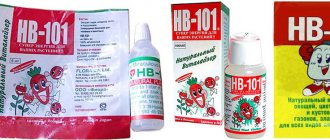It is well known that ammonia (also often called ammonia solution) is used for garden and indoor flowers, as this substance nourishes the soil and repels various pests. Thanks to the use of this product, it is possible to accelerate the growth of crops and also give them a healthier appearance.
However, such a substance must be used carefully in the form of a fertilizer or disinfectant, depending on the type of plant or pest attacking it, since this substance can be dangerous not only for the flowers themselves, but also for humans.
Ammonia for indoor flowers - use and dosage
When plants are planted in pots, soil rich in minerals sooner or later loses its beneficial properties, being washed away with each watering, and the flower requires constant feeding for full development.
There are specially developed complexes for certain types of flowers, mineral and organic fertilizers, as well as folk remedies that can extend the life of flowers and improve their appearance. One of the proven inexpensive and accessible means is ammonia, which can be bought in the form of a solution at the pharmacy and successfully used to feed indoor flowers.
Preparation for midges in indoor flowers
In the case when not a single home remedy allows you to achieve the desired result and despite all the watering, traps and spraying, the midges in indoor flowers do not go away, it is time to use the “heavy artillery” - purchased insecticides. A toxic greenhouse will help disinfect flowers with maximum effect and minimal harm to everyone living in the house. Processing must be carried out in the following sequence:
- Allow the top layer of soil in the pot to dry thoroughly and gently loosen it.
- Place the pot with the flower in a strong plastic bag of such a size that, after tying, there remains an air cushion between the walls of the bag and the leaves of the plant. To fix the package in the correct position, you can use strips and tape.
- Spray the selected midge repellent in indoor flowers onto the surface of the soil and the inner walls of the bag: “Dichlorvos”, “Raptor”, “Neo”, “Reid”, “Aktara”, “Karbafos” or others.
- Carefully tie the bag and leave for 6-8 hours, then remove the pot from the toxic greenhouse and water the plant.
Characteristics and chemical properties of ammonia
Ammonia is a diluted ammonium hydroxide with varying concentrations of ammonia, the most popular 10% version can be found in any pharmacy, a 25% preparation is also common, but it is sold only in specialized fertilizer stores. At the same time, ammonia is a gas that has a high level of solubility in water, depending on its temperature; as the temperature rises, its solubility decreases.
This drug is a transparent, liquid solution that has a specific odor of ammonia, unpleasant for people and animals. From the point of view of chemical composition, this is a very simple concentrate; people call it ammonia.
Gardeners use the term ammonia as an analogue to ammonia, even though their actual chemical formulas are different.
This substance is used in the following areas:
Using ammonia for indoor plants
An affordable and cheap option for nitrogen fertilizer can confidently be called ammonium solution, which is sold in pharmacies and specialty stores. Since all flowers need nitrogen directly from the soil, they need such fertilizing for normal development. When using ammonia as a fertilizer, plants quickly receive the nitrogen necessary for the production of chlorophyll, since the product is immediately absorbed without additional processing.
Ammonia is widely used by gardeners in the form of a mixture of different concentrations; it is perfect for the following flowers:
The second widespread use of this substance among amateur gardeners is its use to increase the resistance of plants to various pests and diseases, since ammonia liquid has a positive effect in the fight against various pests and diseases.
Preparation of solution and calculation of dosage for flowers
In order to help indoor flowers, it is important to correctly calculate the required amount of any fertilizer so as not to spoil the flowers. The same applies to ammonium solution. It can be used for three main purposes:
Options for the required concentrate depending on the expected result:
The proposed options for preparing a nitrogen product for plants are universal. It is important to take into account the size of the pot and the flower itself when watering or spraying with a solution.
Types of midges on flowers
Amateur flower growers most often find white midges on indoor flowers. These are miniature individuals, the size of which is 0.2-1 mm. Their body color is white or yellowish. Small parasites constantly jump on the leaves. Winter or early spring is especially typical for attacks by such insects.
The second known pest is black midges or sciarids. These are small living creatures that persistently fly over plants. They do not harm humans, but they cause discomfort. And they pose a serious danger to the plant or soil.
Numerous larvae damage the root system and also make the soil airtight and more dense.
Rules for using the drug for indoor plants
It is best to use ammonia in order to replenish nitrogen losses, “invigorate” deciduous plants during the period of their active growth and improve flowering when buds appear, but this type of organic fertilizer should not be used for constant feeding of plants.
Spraying foliage
When using an ammonia mixture, do not allow it to come into contact with the leaves of indoor flowers, as it can cause burns to the flowers. If this happens, then you should rinse the plants from the sprayer with running water to remove any remaining ammonia.
Pest protection
To prevent the appearance of pests, you can water the plant at the foot with a universal solution of ammonia and water immediately after planting; this procedure will create additional disinfection of the soil.
If insects appear and need treatment, it is enough to use one of the product options once every 7 days.
Usually it is enough to carry out 1-2 such procedures to get rid of insects; if necessary, you need to repeat watering until the flowers are completely recovered. However, you should not carry out treatment more than once a week or increase the concentration of ammonia in the water for irrigation, as this can lead to the destruction of decorative greenery.
Root feeding
The most common way to use ammonia is to fertilize flowers. Root watering is excellent for indoor plants. Its use is appropriate during the period of active flower growth during March-September. At this time, it is enough to feed the flowers once or twice a month, if they do not show signs of nitrogen deficiency.
Ammonia as fertilizer
Pharmacies sell ammonia 10%. This is what is used as fertilizer. Its price is low, which makes it even more attractive for use.
Sometimes recipes include ammonia 25%:
- This is a technical alcohol solution , which is widely used in pharmaceutical production and agriculture.
- It is not sold in pharmacies ; you can buy it in specialized fertilizer or chemical stores.
- When preparing solutions, it is used in smaller doses , because it is more concentrated.
Using ammonia as a fertilizer requires following certain rules. This is explained by the quality of the drug - evaporation or volatility.
Therefore, you should know that you can:
- use only freshly prepared solution, it is not stored;
- Treat plants in cloudy weather or in the evening/morning when there is no sun.
Use a watering can without a nozzle or with large holes to avoid creating a fine spray.
Things to remember:
- Ammonia is a toxic substance. Therefore, you need to water the plants at the roots, avoiding getting on the leaves and stems.
- It is important to apply fertilizers after abundant watering , on damp soil. These measures will help avoid chemical burns.
- If the recipe involves spraying the plant, then the dosage must be strictly observed. Each crop in the garden has its own.
The working solution is (hereinafter we use ammonia 10%):
| Watering | 25 ml of ammonia per 10 liters of water |
| Spraying | 50 ml of ammonia per 10 liters of water |
These recipes are aimed at preventive use, i.e. when the plants do not show signs of nitrogen deficiency.
Safety when using ammonia
Ammonia solution is a toxic substance even at a low concentration of 10%, so it is very important to follow safety rules when working with the substance in order to protect yourself and plants from the damage it can cause.
For a plant
When working with flowers, it is very important not to use excessive doses of ammonia, which harms the flowers by deteriorating the quality of the soil. It is necessary to calculate the required amount of concentrate for irrigation, avoiding its contact with foliage.
It is also not recommended to prepare this mixture for several weeks; it should be used immediately to preserve minerals.
It is important to adhere to the recommended feeding regimen, since shortening the interval between watering will not benefit the flowers, but rather, on the contrary, will lead to rotting of the root system. In this case, you cannot use the ammonium solution simultaneously with other nitrogen fertilizers.
For man
Ammonia vapors can seriously harm human health and cause poisoning or an allergic reaction, so it is important to adhere to the following rules when working with the substance:
These rules should not be ignored even if you need to prepare a small amount of liquid for irrigation, which, if it comes into contact with the skin, causes burns, as well as disruption of the mucous membranes and respiratory tract.
Common Questions
Having noticed such conditions, you should pay attention to nitrogen fertilizers and apply them.
A solution of ammonia is a universal remedy that helps replenish nitrogen deficiency in indoor plants, and also allows for the prevention of their diseases. You should not get carried away with this product as the only option for improving the condition of flowers, because in some cases it can harm plants and the human body if the rules for working with it are not followed.
Source
Get a carnivorous plant
An unusual, but quite acceptable way to get rid of midges is to get a carnivorous plant in your apartment and feed it with midges!
Pro tip: If these methods don't work, there may be mosquitoes or flies breeding elsewhere. Treat your kitchen garbage disposals, try pouring boiling water down gutters and toilets near where you see pests and make sure they are clear of debris that could trap moisture.
Ammonia for flowers: benefits and methods of use
Ammonia is a popular pharmaceutical drug widely used in medicine and everyday life. It is also useful for plants, including flowers. We will consider the features of using such a tool below.
Ammonia for watering orchids. Iodine and hydrogen peroxide for orchids. Unique feeding
Orchids are very beautiful indoor plants that decorate any interior. To keep plants healthy, it is necessary to regularly feed the flowers with a unique fertilizer prepared on the basis of iodine and peroxide. Let's look at how to properly prepare the solution and feed orchids.
Iodine is an excellent antiseptic, and it also contains a trace element necessary for the growth of plants, including orchids.
Hydrogen peroxide is an excellent disinfectant and works like rainwater for plants. Everyone knows that rainwater is the best water for watering plants and its structure differs from tap water.
How is feeding a solution based on iodine and peroxide useful for an orchid:
- strengthens the immune system,
- stimulates growth,
- protects the plant from pests and root rot.
How to properly prepare fertilizer for orchids.
Preparing orchid food at home is quite simple. To do this you will need iodine, 3% hydrogen peroxide and plain water. If it comes from a tap, you need to keep it away from the bleach.
In 1 liter of water add 2 drops of iodine and 1 tbsp. l. hydrogen peroxide. Stir everything well so that the drugs dissolve. After this, water the orchid. This fertilizer can be applied once every two weeks.
How to prepare a solution to protect plants from pests and diseases.
Because midges, spider mites appear in pots of indoor flowers, including orchids, and root rot can also develop. To avoid this, you can carry out prevention by spraying the orchid leaves with a special solution.
To prepare a solution, dilute 2 tbsp in 1 liter of water. l. hydrogen peroxide, 3 drops of iodine and 2 tbsp. l. ammonia. Mix everything well and then pour the solution into a spray bottle. Then we spray the orchid. Treatment is best done in the morning or evening.
And you can find out how to use the resulting harvest on my channel “The Joy of Being,” where I publish for you many exclusive homemade recipes.
Beneficial features
Ammonia is a transparent substance with a very pungent and pungent odor. This smell is provided by ammonia, and most often its concentration is 10%. A similar composition can be purchased at any pharmacy. There is also ammonia with a 25 percent concentration, but such preparations are rare. Ammonia gained popularity in gardening due to its high nitrogen content.
This substance is extremely important for all plants, as it allows them to grow green mass in the shortest possible time.
Here are some useful properties of ammonia:
Gardeners also love ammonia because such fertilizing is absorbed by plants exactly as much as needed. This is very important, because excess nitrogen causes the plant to spend all its energy on mass growth, and there is no energy left for flowers, ovaries, and fruits. This will not happen with ammonia, but remember that if you give too much concentration, the roots of the plant may get burned.
Why and in what cases is it used?
The life cycle of all plants includes the process of growing foliage, flowering and fruit formation. Nitrogen-type fertilizers help cope with this task and replenish the need of indoor flowers for this component.
Signals indicating the need for feeding with ammonia are the following signs:
- thin stems;
- slow growth;
- excessively small leaves;
- falling of the ovaries;
- yellowing of leaves in the bottom row.
Attention! If such manifestations are noticed, it is necessary to introduce compositions containing nitrogen into complementary foods. As an alternative, ammonia can be used.
How to divorce?
Although ammonia is a relatively safe product, it must be diluted correctly, observing the recommended proportions and dosage.
Let's consider the most popular solution used to fertilize flower crops:
This relatively weak solution is well suited for indoor flowers and garden plants . Helpful advice: if you need to spill only 1 flower with the solution, it is not at all necessary to make 3 liters of the composition at once. You can take 1 liter of water and combine it with a teaspoon of ammonia.
By the way, deciduous house plants can be watered with a stronger composition: 2 teaspoons per liter of water or two tablespoons per 3 liters.
How to use?
Ammonia can be used in different cases, but mostly gardeners are limited to only two options.
Top dressing
The use of ammonia will give the best results in case of nitrogen starvation of the crop. This manifests itself as follows:
To make up for the lack of a useful element and allow the plant to gain weight faster, they begin to water it with a weak solution of ammonia, the preparation features of which we have already examined. If everything is fine and you have seen the first results, then you can slightly increase the concentration of ammonia, for example, instead of 1 tablespoon, put 2. But this is the maximum allowable amount. Feeding should be done once every two weeks throughout the entire growing season and flowering period; the amount of liquid is individual for each flower specimen and depends on its type . If regular watering takes a liter of water, then you also need to feed with a liter, only this time with a solution.
It is very important not to flood the plant. If you follow the rule “more is better,” you can ensure that the roots begin to rot.
And moist soil will create an excellent environment for fungal carriers. But if everything is done correctly, the plants will delight gardeners with their healthy and lush appearance. Plants such as geranium, rose, lily, violet, and nasturtium respond especially well to ammonia fertilizing. But crops such as lithops are prohibited from being treated with ammonia. The same applies to “living stones”.
Pest control solution
Ammonia can be used to spray flower crops. However, this is not done for feeding, but to get rid of pests. Moreover, experienced gardeners recommend spraying only for plants growing in open ground. With the help of a properly prepared composition, you can get rid of pests such as midges, thrips, aphids, flies, snails and slugs, mole crickets, all kinds of caterpillars and butterflies.
The preparation of the solution is as follows:
The finished composition is poured into a spray bottle and the flower crops are processed. It is important that the healing solution gets on all parts: stems, leaves, twigs . You also need to make sure that the lower part of the leaf blade is treated, because this is where aphids most often nest. Several such treatments and the insects, frightened by the pungent odor, will leave your area. Wasps and other flying insects disappear especially quickly. The aphids quickly die, since the soap in the composition forces them to stick to the leaves and suffocate.
Now let's look at the concentration of solutions for other types of insects.
Disinfection of pots
Ammonia can also be used to disinfect containers intended for planting indoor flowers. To do this, grate 100 grams of solid laundry soap and then dilute it in 5 liters of hot water. 60 milliliters of ammonia are poured into this mixture. Immediately wash the pots, then rinse and set out to dry in the sun. This simple procedure will protect you from many diseases and pests.
Finally, we’ll give some more useful tips about using ammonia on flowers:
Why do midges appear in flowers?
To avoid the reappearance of insects, try to figure out where they came from.
Improper watering
Constantly waterlogged soil creates ideal conditions for insects. Drosophila can even settle in a swampy pan.
Stagnant air
Pests feel best and actively reproduce in rarely ventilated rooms without ventilation systems.
Uncultivated land
Midges can be brought in along with the soil. Moreover, both store-bought and collected at the dacha or in the forest.
External factors
Midges may well fly into an open window or window and enter an apartment along with bouquets or potted flowers.
Fungus gnats often enter rooms through hoods and ventilation shafts from warm and humid basements.
Spoiled vegetables and fruits
Waste vegetables or fruits that were not thrown out on time also become housing for fruit flies and black midges. And from them the midges move to the flowers.
Choose!
